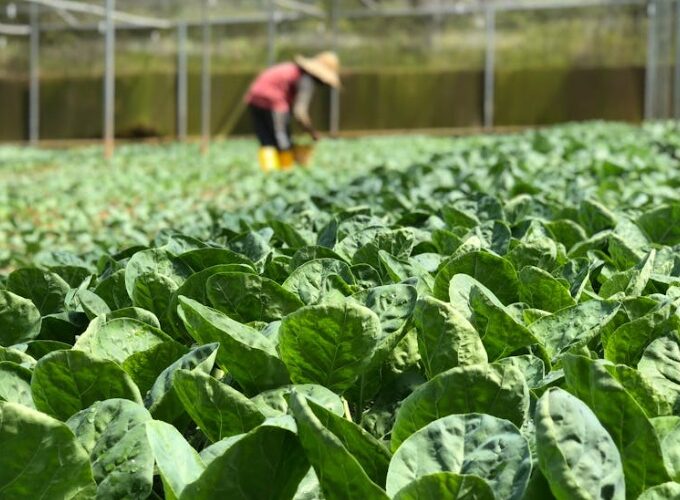The Argentine government announced a groundbreaking trade decision on September 23, 2025 : eliminating export taxes on all major agricultural products, notably temporarily “zeroing” tariffs on soybeans, aiming to enhance the competitiveness of its agricultural products in the global market. Following this announcement, China acted swiftly, placing orders for at least 15 cargoes of soybeans from Argentina.
This move has not only stirred waves within Argentina’s economic circles but also triggered strong reactions in the US agricultural sector, particularly among soybean farmers reliant on the Chinese market, whose livelihoods may now face new challenges. Donald Trump’s political ambitions and Argentina’s actions intertwine, painting a complex picture of geo-economics – one that involves not just trade, but also Sino-US relations and the future trajectory of the global soybean market.
After the US-China trade war erupted in 2018, China quickly became the largest export market for US soybeans. Although the Trump administration attempted to pressure China into submission by raising tariffs, China’s response was to seek alternative suppliers, particularly in South America, like Argentina. China’s reliance on Argentine soybeans gradually deepened, and this recent order clearly demonstrates the rise of Argentine agricultural products in the global market, causing significant unease among American farmers, especially soybean growers.

The Rise of Argentine Soybeans
The rise of Argentine soybeans is no accident. In September 2025, the Argentine government made a landmark decision, announcing the removal of export taxes on various agricultural products including soybeans, aiming to restore the competitiveness of its agricultural exports and attract more international orders. For a long time, the competitiveness of Argentine agricultural products had been hampered by these export taxes. With their temporary removal, Argentine agricultural prices instantly became more attractive in the international market, especially to China, the world’s largest importer of agricultural products.
From China’s perspective, this policy adjustment in Argentina is undoubtedly a golden opportunity. Over the past few years, following US tariff hikes, China began increasing its purchases of soybeans from South America, specifically Argentina and Brazil. This move by the Argentine government now provides China with even more favorable purchasing conditions. Coupled with deepening cooperation in infrastructure construction and finance between the two countries, Argentina’s emergence as a key choice for China’s soybean imports is no longer surprising.
Trump’s Challenge and American Farmers’ Anxiety
For Trump, this news undoubtedly places him in a dilemma. During his presidency, Trump focused heavily on the agricultural sector in Sino-US trade negotiations, attempting to force China to pay higher prices for US soybeans through tariffs, thereby boosting the domestic agricultural economy. However, as China turned to South America for soybean purchases, the effectiveness of this strategy clearly fell short of expectations. Now, the “reciprocal tariffs” policy pursued by Trump faces a severe test in the global soybean market – China is not only reducing purchases from the US in terms of volume but also strengthening economic cooperation with Argentina. This is a heavy blow for American farmers already battered by the “US-China trade war.”
The unease among American farmers stems not only from the China-Argentina deal but also from the underlying geopolitical signals. Trump once made the trade war a cornerstone of his economic policy, intending to force China to “back down” through economic sanctions. However, China’s response pattern clearly challenges the US leadership position in global supply chains. The rise of Argentina, one of South America’s largest agricultural exporters, in the international market, means the fate of American farmers is now profoundly linked to the broader global economic environment. This is not merely a simple trade adjustment; it could be the beginning of a reshaping of the global trade landscape.

Competition in the Global Soybean Market
Competition in the global soybean market is not an overnight phenomenon; it is the result of intertwined national economic policies, geopolitics, and market demand. As Argentine soybean prices drop, agricultural producers in other parts of the world are also beginning to ponder how to increase their market share, especially those reliant on the Chinese market. For instance, Brazil is also taking measures to expand its share in the Chinese market. Meanwhile, facing export difficulties, US agricultural production urgently needs to find new markets or adapt through policy adjustments.
However, the US government seems yet to find an effective solution. Trump has emphasized on numerous occasions that the tariff war could secure a larger market share for US agriculture, but facts have proven that his policies have not effectively promoted agricultural development as anticipated. Even as Trump attempts to use political means to secure greater benefits for American farmers, the Argentine soybean deal indicates his increasingly challenging position in global market competition.
Conclusion
The massive soybean deal between Argentina and China is not just a routine shift in global agricultural trade; it symbolizes a challenge to US leadership in global agricultural trade. The Trump administration’s strategy of relying on tariffs to revive US agriculture appears to be encountering more complex and far-reaching geo-economic shocks. For American farmers, they may now need to face a new reality: globalization has made their survival environment no longer solely dictated by US domestic politics; fluctuations in the global market and policy changes in other countries are exerting increasing pressure on their future.












